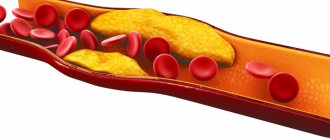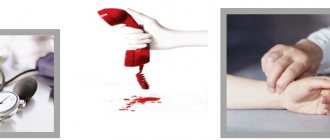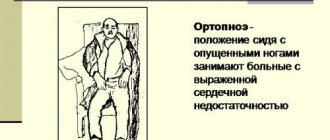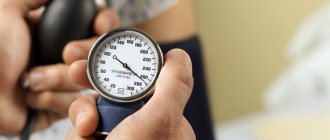Heart rate and respiratory rate in children are higher than in adults due to the higher rate of metabolic processes. The indicators are influenced by emotional and physical stress, body and environmental temperature, oxygen levels in the air and blood.
Normally, a child’s heart and breathing rhythms often change, so you cannot rely on the result of an independent single measurement. When determining indicators, the doctor compares the data with an examination, survey, tests, ECG, and radiography.
An increase in heart rate in a small child most often occurs with infection with fever, congenital heart defects, disruption of the structure of the conduction tract, and in a teenager with neurocirculatory dystonia. A slow pulse is typical of increased intracranial pressure during recovery from an infectious disease.
NPV increases with diseases of the bronchi, lungs, respiratory and heart failure, and decreases with brain damage or poisoning. You can correctly determine the pulse and breathing rhythm of a child at rest; this is usually done during sleep.
Pulse
Parents often ask us the question: “What heart rate is considered normal for a child?”
Heartbeat is one of the main vital parameters that is used to identify a number of pathologies. By observing the nature of the changes, specialists can draw conclusions about the state of the human heart and the entire body as a whole. The normal heart rate of a child is significantly different from that of an adult. Want to check if your child's pulse is normal? See the table of norms by age, the average value and normal limits are indicated here.
Any concerns? You can always consult a pediatrician or cardiologist at the MedVedik Children's Health Clinic.
Arterial pressure
Blood pressure (BP) is one of the few health markers that can be measured at home. Today, almost every family has a device for independently measuring blood pressure. But not all adults know that the norm for children differs from the “120 to 80” we are all used to.
MedVedik reminds that blood pressure depends on the age of the baby. The younger the child, the lower his normal blood pressure. This is due to the fact that the child’s circulatory system and heart continue to develop after birth, so initially the child’s blood vessels and capillaries have less tone than those of adults.
Keep this helpful sign with BP limits for children. These are generalized indicators that are the result of many years of research. They correspond to the working pressure of 95% of healthy children.
Have you noticed a significant discrepancy in the child’s blood pressure readings and in the table? This is already a reason to see a doctor. He will calculate an individual rate specifically for your child and, if necessary, select treatment.
PS By the way, to obtain an accurate measurement result, the size of the tonometer cuff is important. A large cuff on a small child's hand may distort the readings somewhat.
Respiratory rate
Counting respiratory movements is one of the actions performed by a pediatrician when examining a child. Do not underestimate this seemingly simple indicator. The respiratory rate (RR) per minute can provide important information about the state of the whole organism as a whole and the functioning of the respiratory system and the cardiovascular system in particular.
Do you want to calculate your child’s respiratory rate yourself? To do this, you will need a stopwatch (available in almost every mobile phone) and following simple rules. The child should be in a comfortable position and in a calm state (for infants, we recommend counting the breathing rate during sleep). You can observe breathing visually or by placing your hand on the baby's stomach. Be sure to count your breathing movements for a full minute. For the most accurate result, it is recommended to carry out three calculations and calculate the average value.
Did the data obtained surprise you? Indeed, the respiratory rate per minute in children is several times higher than in adults. The younger the child, the higher the respiratory rate. As they grow older, their number decreases, and by the age of 15 it is compared with the norm for adults.
See the table of norms by age. The NPV for boys and girls does not differ.
Why are indicators changing?
If indicators change outside of diseases (for example, due to overheating), then after the end of the external factor they return to normal in 3-7 minutes. A constantly increased heart rate occurs when:
- viral, bacterial infection;
- blood acidification (acidosis);
- anemia (decreased hemoglobin and red blood cells);
- diseases of the bronchi and lungs with respiratory failure (for example, asthma, severe pneumonia);
- increased thyroid function (hyperthyroidism, thyrotoxicosis);
- tumors of the adrenal medulla (pheochromocytoma);
- the use of drugs that stimulate the heart (Eufillin, Atropine, asthma medications, hormones);
- autonomic dysfunction (neurocirculatory dystonia), more often developing in adolescents;
- inflammation of the heart - myocarditis, endocarditis, pericarditis;
- valve defects, large vessels, ventricular and atrial septal defects;
- tuberculosis;
- congenital disorders of the structure of the conduction system of the heart (for example, Wolff-Parkinson-White syndrome).
A slow heart rate is characteristic of increased intracranial pressure (tumor, cerebral edema, sinus thrombosis), severe malnutrition (hypotrophy), renal failure, viral hepatitis, typhoid fever. It may appear during the recovery period after an infectious disease.
The most severe decrease in heart rate occurs when conduction blockade in the myocardium occurs. In a child, such arrhythmia leads to rapid loss of consciousness. Children usually tolerate a moderately accelerated rhythm better.
The respiratory rate increases when:
- bronchospasm or inflammation (bronchial asthma, bronchitis);
- fever;
- lung diseases - pneumonia, tuberculosis, compression due to fluid accumulation in the pleural cavity, tumors;
- blockage of a branch of the pulmonary artery by a thrombus, embolus (thromboembolism);
- chest pain;
- diseases of the nervous system, hysteria;
- severe anemia;
- heart failure due to myocarditis, heart disease;
- fullness of the stomach, bloating.
A decrease in respiratory rate occurs with a brain tumor, edema, or inflammation of the meninges (meningitis). The cause may be severe failure of the kidneys, liver, acute onset of diabetes from a coma, or poisoning.
Leukocyte formula
Let's look at the leukocyte count in children under 5 years of age. Many modern parents prefer to take blood tests in specialized laboratories, which deliver the results directly or send them by email. Having received the data, moms and dads begin to analyze the numbers, compare them with reference values and sometimes panic.
Don't worry ahead of time. In infants, the leukocyte formula is somewhat different from the same formula in adulthood. As in previous cases, this is explained by the fact that the child’s body is in the development stage.
MedVedik encourages you to trust the interpretation of test results to professionals.
The number of leukocyte cells is constantly changing; for this purpose, a leukocyte formula was created, which helps doctors assess the general condition of the patient and promptly identify this or that abnormality. The norms for the content of different bodies belonging to the group of leukocytes vary depending on age. The number of some cells increases, while others decrease, even with normal development. At certain moments, the number of different leukocytes equalizes. Experts call all this a crossover of the formula and do not classify it as a pathology. Most often, crossover occurs during the first year of a child’s life.
Our clinic is ready to advise you on all questions that may arise.
Daily amount of urine and frequency of urination depending on age
| Age | Average quantitative indicators | ||
| Amount of urine per day, ml | Number of urinations per day | Single amount of urine, ml | |
| Up to 6 months | 300-500 | 20-25 | 20-35 |
| 6 months-1 year | 300-600 | 15-16 | 25-45 |
| 1-3 years | 760-820 | 10-12 | 60-90 |
| 3-5 years | 900-1070 | 7-9 | 70-90 |
| 5-7 years | 1070-1300 | 7-9 | 100-150 |
| 7-9 years | 1240-1520 | 7-8 | 145-190 |
| 9-11 years | 1520-1670 | 7-8 | 220-260 |
| 11-14 years old | 1600-1900 | 6-7 | 250-270 |
Hemoglobin
Health is made up of many components, each of which plays a specific role. One of the important indicators is the level of hemoglobin in the child’s blood. You will probably not be surprised to learn that hemoglobin standards in children of different ages differ significantly from adults. Almost always their values are higher.
Every cell in the human body requires oxygen to function. Hemoglobin, a complex protein found in red blood cells, plays a key role in enriching the body with oxygen.
The highest level of hemoglobin is in newborns, it ranges from 145 to 220 g/l. This is explained by the fact that during pregnancy, the expectant mother’s body creates the iron supply necessary for the child. At the age of one month, the reserve is gradually depleted and the level of hemoglobin decreases. By three months it can drop to 90 g/l. Proper nutrition is necessary to maintain it. The best source of replenishing iron and other useful elements is breast milk. Therefore, if possible, you should not stop breastfeeding for at least a year. Next, the hemoglobin level in children begins to gradually increase.
After the onset of puberty (12-15 years), depending on the gender of the child, hemoglobin levels begin to vary. As a rule, it is slightly higher in boys than in girls. By adulthood, the value of hemoglobin in the blood approaches the “adult” level.
In our table you can see the norms for hemoglobin levels in the blood of children from birth to 18 years of age.
Body temperature
Young parents are often concerned about the question of what temperature can be considered normal in a child?
An increase in readings on a thermometer should always be taken seriously, and even more so when it concerns a baby. According to statistics, 20% of calls and requests that pediatricians receive from parents outside of the office are caused by concerns about an increase in body temperature.
We have prepared a picture for you that will help you adequately perceive the numbers on the thermometer. The method of measuring temperature is also important. Do not forget that in children (even infants) the temperature can rise to 37.3 - 37.5 ° C in the evening. So there should be no cause for concern. But if the measurement numbers reach 38 °C or more, then this is already a reason to think and try to understand the causes of the fever.
Clinical symptoms of poisoning
| Substance | Symptoms |
| Atropine (belladonna, henbane, datura) | Dilated pupils that do not respond to light. Hyperemia, dry skin and mucous membranes. Tachycardia. Hyperthermia. Hallucinations, convulsions. |
| Vapors of gasoline, kerosene, turpentine | Icteric skin. Shortness of breath, hemoptysis. Cyanosis. Cramps. |
| FOS | Constriction of the pupils. Pallor, hypothermia. Hypersalivation, bronchorrhea. Breathing problems. Stomach ache. Bradycardia, arterial hypotension. Cramps. |
| Saltpeter, nitrates | Diffuse cyanosis that does not improve after oxygen therapy. Dyspnea. Tachycardia. Cramps. |
| Carbon monoxide | Headache, dizziness. Chest pain. Cough. Vomit. Hyperthermia, then pallor. Convulsions, paresis and paralysis. Pulmonary edema. |
| Mushrooms: | Latent period from 6 to 24 hours. Stomach ache. Vomit. Cholera-like enterocolitis. Delirium, adynamia. Collapse. Coma. |
| Pale grebe (phalloin, phalloidin, amanite) | |
| Fly agaric (muscarine, muscaridine, etc.) | Latent period 1-2 hours. Drooling, nausea, abdominal pain, vomiting, diarrhea. Constriction of the pupils, difficulty breathing. Visual disturbances, delusions, hallucinations. Coma. |
| String, morel (galveolic acid) | Latent period 1/2-2 hours to 6 hours. Gastroenteritis. Hemolytic anemia, jaundice. Hematuria. |








